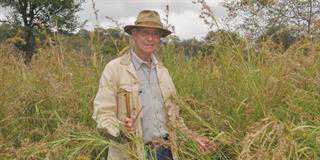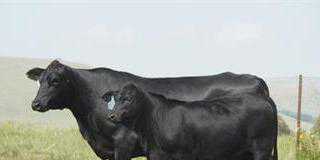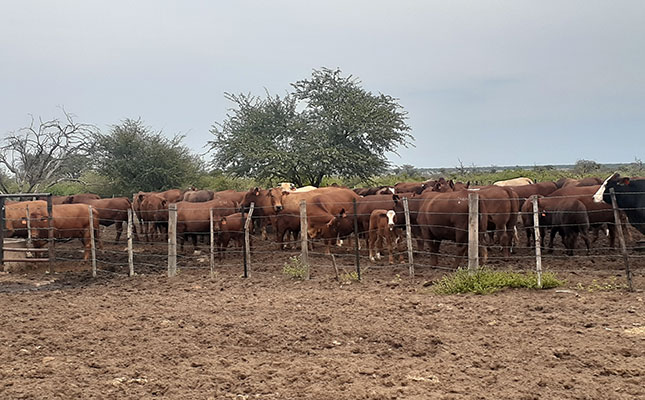Internal parasites
Roundworms: Although conditions in the summer rainfall area are not so conducive for new wireworm infestations, there were still numerous reports of losses due to this parasite.
Farmers should be aware that bankrupt worms are more prevalent during cooler temperatures. In the winter and non-seasonal rainfall areas brown stomach worm can cause severe problems.
Now is the time to evaluate which drug groups are still effective on your farm so you can plan for next season.
Tapeworms: Farmers should be aware of economic losses due to measles. Find out where the cattle become infected.
Liver and conical fluke worms: Numerous reports of infestations were received. Do not only rely on treatment, but develop an integrated control programme with your vet. As animals usually graze in vleis during winter, where the infective stages of the flukes are, it’s important that animals are regularly examined for signs of parasitism.
External parasites
High blue tick numbers were reported from many parts of the country. There were lower numbers of bont ticks, brown ear ticks, bont-legged ticks and red-legged ticks.
To control brown ear ticks, a three host parasite, treat cattle during winter to control the small larval stages usually found in the ears of cattle.
Sucking and biting lice numbers are on the increase and are responsible for weight loss in winter.
Numerous reports of young animals with coccidiosis were received. These parasites cause diarrhoea and even mortalities.
Tick-transmitted diseases
As noted, blue tick numbers were high and therefore cases of African and Asiatic red water were also high.
Numerous anaplasmosis and heartwater cases were reported. In northern KZN, nagana is still rife.
Venereal diseases
There is no light at the end of the tunnel when it comes to trichomonosis. This disease continues to cost the cattle industry of millions of rands as calving percentages drop significantly. Other diseases that were reported are vibriosis and pizzle disease.
Insect-transmitted diseases
The incidence of these diseases usually drops towards winter. However due to the finding that ticks also transmit lumpy skin disease the incidence of this disease is still high. Numbers of three-day stiff sickness and blue tongue decreased.
Viral diseases
The following were reported: bovine malignant catarrh (snotsiekte), infectious bovine rhinotracheitis (IBR), bovine viral diarrhoea (BVD), enzootic bovine leucosis (EBL), warts, orf, rabies and jaagsiekte.
Bacterial diseases
All of us have to work together to control bovine brucellosis. Other diseases caused by bacteria reported were: colibacillosis, salmonellosis, blackquarter, swelled head, red gut, blood gut, pulpy kidney, botulism, tetanus and pasteurellosis.
Poisonings
The following poisonings were reported: cardiac glycoside poisonings, Cestrum, Cynanchum, facial eczema, geeldikkop, kikuyu, Lantana, soya, ergot, organophosphate, oats poisoning, Klaaslouwbos, prussic acid, rye grass, Senecio, tulip, water contamination, urea and blue green algae.
Nutritional deficiencies
The following deficiencies were reported: energy, protein, phosphate, calcium, copper, zinc, selenium, manganese, Vitamin A and Vitamin B1.
Metabolic conditions
The following were reported: acidosis, displaced abomasum, ketosis and milk fever.
Reproductive disorders
The following were reported: dystocias, metritis, poor conception, retained afterbirths and prolapses.
Feedlot Report
Sheep feedlots
- Deaths due to salmonellosis are still occurring mainly in sheep from the Eastern Cape.
- Pulpy kidney mortalities were declining and pneumonia was generally seen in younger and lighter lambs.
- Numerous livers were condemned due to liver abscessation at abattoirs. In these cases there was no rumen damage. The widespread abscesses most probably derive from navel infections which lambs contracted from infected camps and kraals shortly after birth.
- Livers were also condemned due to parasite migration in the liver.
- Torsion of the intestines as well as a few cases of blood gut in the adaptation period caused losses.
Cattle feedlots
- Numerous deaths occurred due pneumonia. Contributing factors were adverse weather conditions. Many underweight calves arrived ill and deaths occurred within days. after arriving at the feedlot.
- Poor quality calves are always unwanted. Poor genetics, a mineral and Vitamin A deficiency, poor nutritional status and internal and external parasitism are all contributing factors to weaners not adapting and dying.
- Numerous BVD permanent infected calves were among groups of calves with high morbidity and mortality.
- Blackquarter caused deaths in cattle that had been in the feedlot for some time. Most probably bruising occurred which created the ideal anaerobic conditions for the clostridial spores to germinate. Farmers should make sure that they vaccinate their cattle against all the clostridial bacteria causing blackquarter.
View the disease map to track outbreaks in your area.













